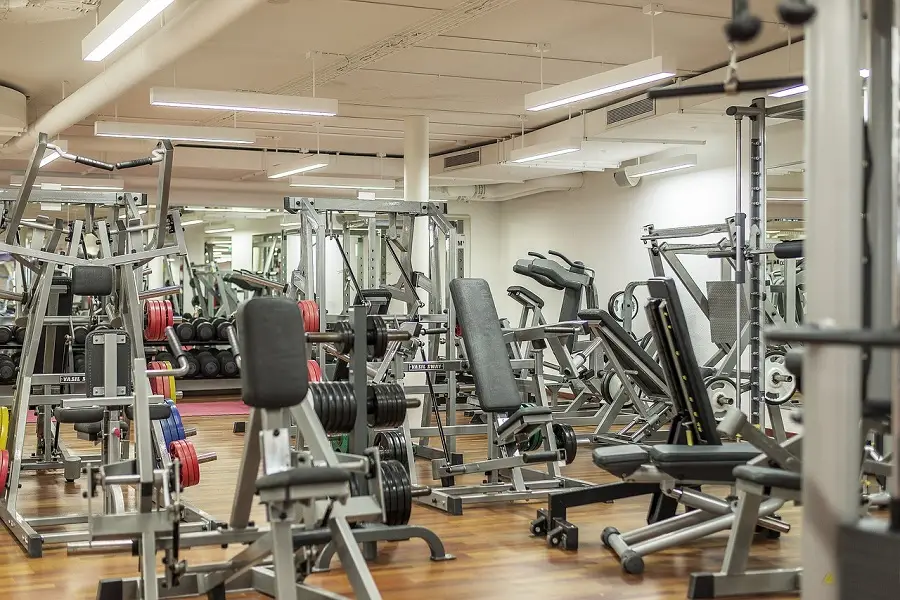Using Different Sets at the Gym for Muscle Growth
When it comes to gym workouts, variety isn’t just the spice of life—it’s a crucial element in muscle development. Different sets at the gym can drastically affect your results by engaging muscles in unique ways and preventing plateaus. Understanding the diverse types of sets and how they stimulate muscle growth can enhance your fitness regimen. Let’s dive into the various types of sets you can incorporate into your workouts.
1. Super Sets
A super set involves performing two exercises back-to-back with no rest in between. These exercises can target the same muscle group or opposing muscle groups. For instance, you might pair a bench press (chest) with a bent-over row (back). Super sets increase workout intensity, improve endurance, and save time.
2. Drop Sets
In a drop set, you perform an exercise until failure, then reduce the weight and continue for additional reps until failure again. This process is repeated multiple times, typically with decreasing weights. Drop sets push muscles beyond their usual limits, leading to greater hypertrophy and strength gains due to the extended time under tension.
3. Giant Sets
Giant sets consist of four or more exercises performed consecutively without rest, usually targeting the same muscle group. This method exhausts the muscle thoroughly, increasing the muscle pump and metabolic stress, which are key drivers of muscle growth.
4. Tri Sets
Similar to giant sets but with only three exercises, tri sets are another way to intensify your workout. They are particularly effective for isolating and fatiguing a specific muscle group, promoting significant muscle engagement and growth.
5. Descending/Pyramid Sets
Descending sets, also known as pyramid sets, involve starting with a heavy weight and reducing the load in subsequent sets while increasing the number of repetitions. This approach allows you to engage muscle fibres fully and improve muscular endurance.
6. Retro-Gravity Sets
Retro-gravity sets focus on the eccentric phase of an exercise, where the muscle lengthens under tension. For example, in a bicep curl, the lowering part of the curl is emphasised by using heavier weights than usual and performing the eccentric movement slowly. This type of set increases muscle damage and strength gains.
7. Rest-Pause Sets
Rest-pause sets involve performing a set to near failure, resting for a short period (usually 10-20 seconds), and then continuing with the same weight for as many additional reps as possible. This technique allows you to push past normal fatigue thresholds and achieve a greater overall workload.
8. Forced Reps
Forced reps are performed with the assistance of a spotter after reaching failure on your own. The spotter helps you complete a few additional reps. This method ensures muscles are worked to their absolute limit, promoting growth and strength gains.
9. Partial Reps
Partial reps involve performing only part of the range of motion of an exercise. This technique can be used to overcome sticking points or to target specific parts of a muscle. By focusing on weak areas, partial reps can help balance muscle development and improve overall performance.
10. Negative Sets
Negative sets emphasise the eccentric (lowering) phase of a lift. You typically use a weight greater than your maximum lift for the concentric (lifting) phase, often with the help of a spotter, and then slowly lower the weight on your own. This method increases muscle tension and leads to significant strength and size gains. Don’t try to do these on your own!
How Mixing Different Sets at the Gym Promotes Muscle Growth
Mixing different sets at the gym is crucial for several reasons:
1. Avoiding Plateaus
When muscles are subjected to the same routine repeatedly, they adapt, and growth slows down. Different sets introduce new stimuli, forcing muscles to adapt continuously, which helps in overcoming plateaus.
2. Engaging Different Muscle Fibres
Various set techniques target different muscle fibres and aspects of muscle contraction. For instance, slow eccentric movements target muscle fibres differently than rapid concentric movements. Engaging a broader range of fibres promotes more comprehensive muscle development.
3. Enhancing Metabolic Stress
Techniques like super sets, giant sets, and drop sets increase metabolic stress, a key factor in muscle hypertrophy. The increased blood flow and nutrient delivery to muscles during these intense workouts help in muscle repair and growth.
4. Increasing Time Under Tension
Methods like retro-gravity sets and negative sets prolong the time muscles are under tension, which is crucial for stimulating muscle growth. More time under tension means more micro-tears in muscle fibres, leading to greater muscle repair and growth.
5. Boosting Hormonal Response
High-intensity set techniques can trigger a greater hormonal response, including the release of growth hormone and testosterone, both of which are critical for muscle growth. Techniques that push muscles to failure or beyond are particularly effective in this regard.
Conclusion
Understanding and incorporating different sets at the gym can significantly enhance your workout effectiveness and lead to better muscle growth. By continually challenging your muscles with a variety of stimuli, you not only prevent plateaus but also ensure a more balanced and comprehensive development. So next time you hit the gym, mix up your routine with super sets, drop sets, giant sets, and more to maximise your gains and keep your workouts exciting and productive.
The article ‘Different Sets at the Gym’ was first written and published by Bill Jones Mr Universe on Monday 8th July 2024 at 16:00 and is subject to copyright. All rights are reserved.
This short video talks about how we can increase muscle growth by using different sets at the gym. You may also like to check out this article that I wrote earlier, called ‘the best workout for beginner bodybuilders.’
